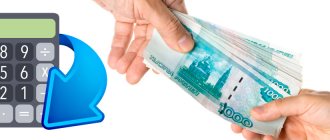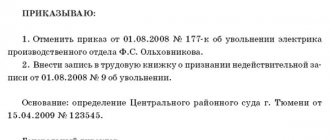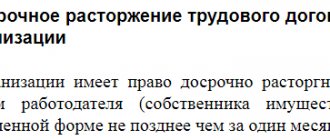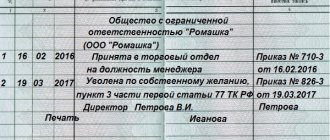In payment for shipped goods, the buyer can issue you his own (promissory) bill or a third party bill of exchange (transferable), discount or interest bill. We will talk about how this operation and the further fate of the bill are reflected in tax accounting.
The fact that in payment for goods the buyer issued you his own bill of exchange or transferred a bill of exchange of a third party does not in any way affect the procedure for recording the sale of goods in tax accounting. In other words, on the date of shipment you need to recognize revenue in the full amount of the contract value of the goods and charge VAT in the general manner (clause 3 of Article 271 of the Tax Code of the Russian Federation). The cost of goods sold, in payment for which a bill of exchange was received, is also recognized as expenses in the usual manner. At the same time, on the date of receipt of the bill of exchange, income and expenses in the form of the par value of the bill of exchange, discount or interest on it do not arise (Article 815 of the Civil Code of the Russian Federation, letter of the Ministry of Finance dated April 27, 2011 No. 03-11-06/2/68).
note
To confirm receipt of a bill of exchange from the buyer in payment for shipped goods, it is necessary to issue an act of acceptance and transfer. It must indicate the agreement under which the bill of exchange was issued (transferred) to secure payment.
Interest calculation
The calculation of the interest paid on your own bill depends on the following factors:
- the amount on which interest is calculated;
- interest rate on a bill;
- the duration of the reporting month for which the calculation is made.
To determine the amount of interest on a bill for the reporting month, use the formula:
| Amount of interest on the bill for the reporting month | = | Amount on which interest is calculated | × | Interest rate | : | The number of calendar days in the period for which the interest rate is set (for example, 365 days or 366 days for the annual interest rate) | × | The number of calendar days in the reporting month during which the bill was in circulation and interest was accrued on it |
This follows from paragraph 8 of PBU 15/2008 and paragraphs 1 and 4 of Article 328 of the Tax Code of the Russian Federation.
The amount on which interest is calculated is usually the face value of the note.
The rate at which interest is calculated is indicated on the bill itself. If the rate is not specified in the bill, it is considered non-interest bearing.
This procedure follows from Articles 5 and 77 of the Regulations, approved by Resolution of the Central Executive Committee and Council of People's Commissars of the USSR dated August 7, 1937 No. 104/1341.
To correctly determine the number of calendar days in the reporting month during which the bill was in circulation and interest was accrued on it, you need to know:
- the date from which interest should begin to accrue;
- the date on which accruals should stop.
Start calculating interest for the reporting month from the day following the day the bill was drawn up, but not earlier than it was transferred to the counterparty (for the reporting month when the bill was transferred), or from the start of the reporting month (if the bill was transferred to the counterparty last month). If the bill itself indicates a later date from which interest is calculated, calculate it also from the next day (but not earlier than the bill was transferred to the counterparty).
The last day for interest accrual is:
- the last day of the reporting month in accounting or tax accounting (if the bill is in circulation on this date);
- the day on which the bill must be presented for redemption (the end of the bill's circulation period);
- the day on which the period during which interest accrues ends (if it is established in the bill and does not coincide with the date of its repayment).
This follows from paragraph 8 of PBU 15/2008, subparagraph 2 of paragraph 1 of Article 265 and paragraphs 1 and 4 of Article 328 of the Tax Code of the Russian Federation, Chapter V and Articles 5, 73 and 77 of the Regulations approved by the resolution of the Central Executive Committee and the Council of People's Commissars of the USSR dated August 7, 1937. No. 104/1341, and paragraph 19 of the resolution of the Plenum of the Supreme Court of the Russian Federation of December 4, 2000 No. 33 and the Plenum of the Supreme Arbitration Court of the Russian Federation of December 4, 2000 No. 14.
An example of calculating interest on an organization's own bill of exchange for the reporting month
On January 12, Alpha LLC (buyer) entered into an agreement for the supply of a consignment of goods with Torgovaya LLC (seller) for a total amount of 23,600 rubles. (including VAT – RUB 3,600). The contract provides for the buyer to secure the cost of goods with his own bill of exchange.
On the same day, Hermes shipped the goods, and Alpha issued a bill of exchange with a face value of 23,600 rubles. The payment term for the bill is upon presentation. The bill provides for accrual of 5 percent per annum from the date of its preparation.
On March 31, Hermes presented the bill for payment. On the same day, Alpha extinguished it.
Alpha's accountant calculated the amount of interest for each reporting month during the entire period that the bill was held by Hermes, starting from the moment of its transfer (from January 13 to March 31).
The amount of interest on the issued own bill was:
– for January: 23,600 rubles. × 5% : 365 days/year × 19 days = 61 rub.;
– for February: 23,600 rub. × 5% : 365 days/year × 28 days = 91 rub.;
– for March: 23,600 rub. × 5% : 365 days/year × 31 days = 100 rub.
Payment term: upon presentation, but not earlier
Situation: when is it necessary to accrue interest on your own bill of exchange, transferred to a counterparty, with a maturity date of “at sight, but not before...”? The early date has not arrived.
Interest on a bill of exchange for which the payment term is specified “at sight, but not earlier than...”, is calculated from the day following the day indicated as the earliest date on which the bill can be presented for payment. It is explained like this.
Interest must be accrued on your own bill from the date of its transfer to the counterparty or a later date indicated on it (Articles 5 and 77 of the Regulations, approved by Resolution of the Central Executive Committee and Council of People's Commissars of the USSR dated August 7, 1937 No. 104/1341).
The Supreme Arbitration Court of the Russian Federation explained this procedure as follows. Interest must accrue after the date of the bill of exchange if:
- it contains a direct clause about this (i.e., the inscription “interest is calculated from such and such a date” indicating a specific date);
- The payment term for it is “on presentation, but not earlier than...” indicating a specific date.
This is stated in paragraph 19 of the resolution of the Plenum of the Supreme Court of the Russian Federation dated December 4, 2000 No. 33 and the Plenum of the Supreme Arbitration Court of the Russian Federation dated December 4, 2000 No. 14.
In any case, when calculating interest, do not include the day the bill was drawn up or the later date indicated on it for the calculation of interest. That is, the counting of the number of days begins from the day following one of the specified moments (but not earlier than the day the bill is transferred to the counterparty). This follows from Article 73 of the Regulations, approved by Resolution of the Central Executive Committee and Council of People's Commissars of the USSR dated August 7, 1937 No. 104/1341.
Types of stock instruments
One of the most important markets in the economic system of any country is the securities market.
It performs a number of functions that have a direct impact on the stability of the economy, as well as its potential for growth. The most important functions of the stock market include:
- obtaining income from assets and free cash flows;
- formation of market prices for stock instruments, impact on the balance of supply and demand;
- creation of a single information field accessible to all participants;
- regulation of relations within the market between participants in transactions;
- distribution of financial risks;
- creating conditions for the movement of money and capital assets between sectors of the economy;
- attracting citizens to investment activities by transferring savings into investments;
- additional financing of the budget without additional emission of money supply.
Finished works on a similar topic
- Coursework Discount and interest bill 450 rub.
- Abstract Discount and interest bill 250 rub.
- Test work Discount and interest bill 250 rub.
Get completed work or advice from a specialist on your educational project Find out the cost
All relationships in the market are carried out using securities. The economic essence of the stock market comes down to production and transactions with them.
About fifteen types of securities are used in Russia. An investor who wants to receive additional financing or income from his free funds, as a rule, resorts to the formation of a package of stock documents. This approach is called an investment portfolio. It allows its owner to create a flexible instrument for generating income on their assets at different times and with varying degrees of risk. The use of securities with varying degrees of liquidity, maturities and riskiness makes it possible to reduce losses across the entire package of documents that form the investment portfolio.
Currently, electronic types of documents are increasingly used. However, there are securities that must be issued only in paper form. One of these is a bill.
Discount calculation
The calculation of the discount on a bill of exchange transferred to a counterparty depends on the following factors:
- the total amount of the discount (the difference between the face value of the bill and the value at which it was transferred to the counterparty);
- the number of calendar days remaining until the expiration date of the bill of exchange (that is, until the last day when it can be presented for payment);
- the duration of the reporting month for which the calculation is made.
To determine the discount amount on a bill for the reporting month, use the formula:
| Discount amount for the reporting month | = | Face value of the bill | – | The cost at which the bill was transferred to the counterparty | : | Number of calendar days remaining until the expiration date of the bill of exchange | × | The number of calendar days of the reporting month during which the bill was in circulation |
This calculation procedure follows from paragraph 8 of PBU 15/2008, paragraph 3 of Article 43 and paragraph 4 of Article 328 of the Tax Code of the Russian Federation.
Determine the number of calendar days remaining until the end of the circulation period, starting from the day following the day the bill was drawn up, but not earlier than it was transferred to the counterparty, until the day when its circulation period ends (Chapter V and Article 77 of the Regulations approved by the resolution Central Executive Committee of the USSR and Council of People's Commissars of the USSR dated August 7, 1937 No. 104/1341).
As a rule, the end of the circulation period (the last day on which the bill can be presented for payment, or any indication of this date) is indicated on the bill itself (Articles 1 and 75 of the Regulations approved by the resolution of the Central Executive Committee of the USSR and the Council of People's Commissars of the USSR dated August 7, 1937 No. 104/1341). For example, this could be the inscription “The bill is payable on the following date: December 23, 2021.”
To correctly determine the number of calendar days in the reporting month during which the bill was in circulation and the discount was taken into account, you need to know:
- the date from which you need to start distributing the discount;
- the date on which the distribution must cease.
Start calculating the discount for the reporting month from the day following the day the bill of exchange was drawn up, but not earlier than it was transferred to the counterparty (for the reporting month in which the bill of exchange was transferred), or from the beginning of the reporting month (if the bill of exchange was transferred to the counterparty last month) . Consider the last day of discount distribution to be:
- the last day of the reporting month in accounting or tax accounting (if the bill is in circulation on this date);
- the day on which the bill must be presented for redemption (the end of the bill's circulation period).
This follows from paragraph 8 of PBU 15/2008, subparagraph 2 of paragraph 1 of Article 265 and paragraphs 1 and 4 of Article 328 of the Tax Code of the Russian Federation, Chapter V and Articles 5, 73 and 77 of the Regulations approved by the resolution of the Central Executive Committee and the Council of People's Commissars of the USSR dated August 7, 1937. No. 104/1341, and paragraph 19 of the resolution of the Plenum of the Supreme Court of the Russian Federation of December 4, 2000 No. 33 and the Plenum of the Supreme Arbitration Court of the Russian Federation of December 4, 2000 No. 14.
An example of calculating the discount amount on an organization’s own bill of exchange for the reporting month
On January 12, Alpha LLC (buyer) entered into an agreement for the supply of a consignment of goods to Torgovaya LLC (seller) for a total amount of 118,000 rubles. (including VAT – 18,000 rubles). The contract provides for the buyer to secure the cost of goods with his own bill of exchange.
On the same day, Hermes shipped the goods, and Alpha issued a bill of exchange with a face value of 120,000 rubles. The payment deadline for the bill is March 31.
Alpha's accountant calculated the discount amount on the bill for January (from January 13 to January 31).
The number of calendar days remaining until the expiration date of the bill of exchange is 78 days (19 days + 28 days + 31 days).
For January, the discount amount on the issued own bill was: (120,000 rubles - 118,000 rubles): 78 days. × 19 days = 487 rub.
Difference between bills of exchange and other securities
It is useful to consider how a bill of exchange differs from a bond of a similar legal nature, which is also generally considered to be an unpersonalized debt obligation.
The key criterion for distinguishing between the two financial instruments noted is the subject of the debt. In the case of a bill of exchange, this is cash, less often - a certain product. The subject of the debt on the bond is the share of participation in the share capital of the company. But there are other differences between the mentioned financial instruments:
- bonds are usually subject to registration by the state, bills of exchange are a financial instrument freer from formalities, although, of course, it can be regulated by various legal acts, such as the law on a promissory note or a bill of exchange;
- In some cases, bills can be used to make payments instead of those made in cash; bonds are not intended for these purposes;
- The main legal mechanism for the formation of bonds is the conclusion of a purchase and sale agreement; bills of exchange are transferred by order of the current owner.
The payment instrument in question may be part of the company's documentation. So, if a company has received a promissory note, accounting for the corresponding source must be carried out in accordance with the requirements of accounting legislation. Actually, it will be useful to consider the key legal provisions that regulate the circulation of the financial instruments in question.
Payment term: upon presentation
Situation: how to determine the date when your own bill of exchange with a payment term “at sight” expires?
The expiration date of such a bill of exchange is the 365th (366th) day from the date of its preparation.
An organization is obliged to pay a bill of exchange upon presentation upon its presentation. Moreover, such a bill must be presented for payment within one year from the date of its preparation. Provided that this annual period has not been changed by the drawer or endorsers.
In this case, the bill does not have any inscriptions that shorten or extend its circulation period. Therefore, its circulation period is considered to be a calendar year - 365 or 366 calendar days, that is, all the days during which the bill can change hands or be in the ownership of any bill holder.
This procedure follows from Articles 34 and 77 of the Regulations, approved by Resolution of the Central Executive Committee of the USSR and the Council of People's Commissars of the USSR dated August 7, 1937 No. 104/1341.
In what areas is it used and what problems does it solve?
Due to their versatility, simplicity of execution and ease of transfer procedures, bills of exchange are widely used in many areas of economic activity. And in particular:
- In retail and wholesale sales for interest-free deferred payments. In this case, the buyer plays the role of drawer and payer, issuing a bill in the name of the seller of the goods;
- In lending from both individuals and legal entities. Loans issued in exchange for bills of exchange are considered more reliable. In this case, the bill is issued by the borrower in the name of the creditor;
- As a means to attract capital. Bank bills are usually used in this form. But we are no longer talking about loans, but rather about bank deposits. That is, the bank acts as the drawer and payer, and the bill is issued in the name of the depositor. Similarly, investors and enterprises can attract funds;
- As a means of payment for mutual settlements. That is, in fact, a bill of exchange can act as an analogue of money. Basically, this kind of mutual settlements are made between legal entities.
- A bill of exchange can act as collateral and also be the object of sale and purchase.







